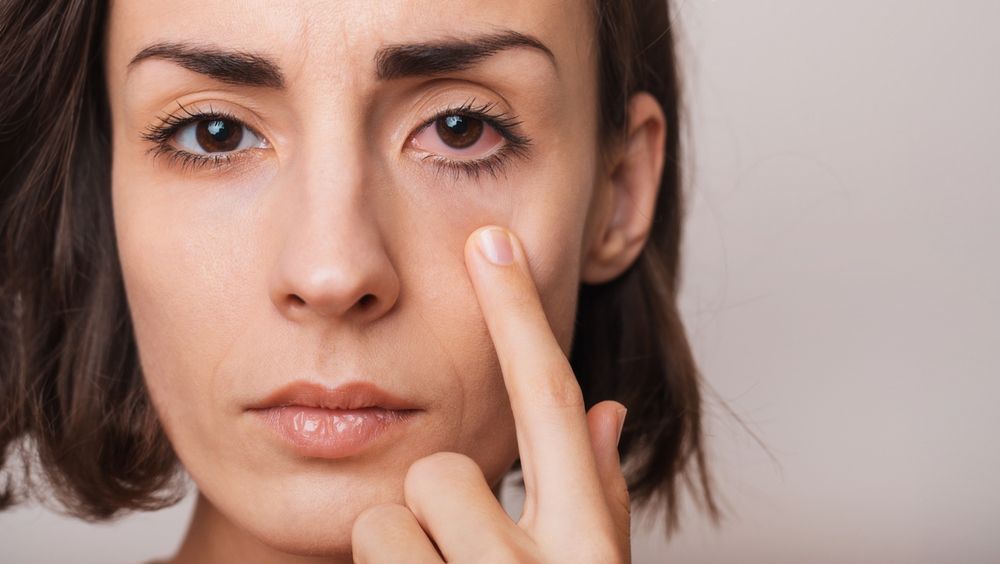At Colorado Eye Clinic in Greenwood Village, Denver, CO, Dr. Abed Namavari often explains that occasional eye dryness can be normal, but experiencing dry eyes consistently is usually a sign of an underlying condition. Tears play a crucial role in maintaining eye health by providing lubrication, reducing the risk of infection, and keeping vision clear. When the eyes do not produce enough tears or the tears evaporate too quickly, the result is dry eye syndrome.
Chronic dry eye is more than just a nuisance. For many patients, it leads to burning, stinging, redness, and even blurred vision. Left untreated, persistent dryness can damage the eye’s surface and affect quality of life. Understanding whether constant dryness is normal involves looking at the possible causes and identifying when it may require medical attention.
Why Do Dry Eyes Happen?
Dry eyes can result from several different factors, often working together to reduce the stability of the tear film. The tear film itself is made up of three layers: oil, water, and mucus. Each layer plays an important role in keeping the surface of the eye hydrated and smooth. If any one of these layers is disrupted, the eyes may not remain properly lubricated.
Common causes of dry eyes include aging, as natural tear production tends to decrease over time. Hormonal changes, especially in women after menopause, are also a significant contributor. Certain medications, including antihistamines, decongestants, and antidepressants, can interfere with tear production. Environmental conditions, such as exposure to wind, smoke, or dry air, may worsen symptoms. With so many potential causes, experiencing dry eyes all the time is not considered normal and often points to an underlying issue.
Lifestyle and Environmental Factors
Modern lifestyles contribute heavily to the increasing rates of dry eye syndrome. Digital device use is one of the leading causes of worsening symptoms. When people spend long hours on computers, tablets, or smartphones, their blink rate drops significantly, leading to faster tear evaporation. This condition, often called digital eye strain, makes dryness a daily struggle for many patients.
Environmental factors are equally important. Living in dry climates, working in air-conditioned offices, or using fans and heaters can accelerate tear evaporation. People who wear contact lenses may also notice chronic dryness, as lenses can disrupt the natural tear film. While these factors are common, experiencing discomfort every day should not be dismissed as “normal.” Instead, it is a sign that the eyes need better protection and care.
Medical Conditions Linked to Dry Eyes
Persistent dry eyes are sometimes linked to underlying medical conditions. Autoimmune diseases such as Sjögren’s syndrome, rheumatoid arthritis, and lupus can directly impact tear production. Conditions like thyroid disorders and diabetes also contribute to dryness. Even blepharitis, a common eyelid inflammation, can interfere with the function of oil glands that are critical for healthy tears.
Recognizing these associations is important because dry eyes may be one of the first noticeable symptoms of a systemic health issue. For patients with chronic dryness, a comprehensive eye exam can help identify whether an underlying condition is contributing to their symptoms. By treating both the eye-related and systemic causes, patients can experience meaningful relief and protection from further complications.
When to Seek Help for Chronic Dry Eyes
Although occasional dryness may be relieved with over-the-counter lubricating drops, constant symptoms should not be ignored. Persistent dry eyes can lead to corneal damage, infections, and reduced visual clarity if untreated. Patients should seek professional evaluation if they notice ongoing redness, pain, blurred vision, or sensitivity to light in addition to dryness.
Treatment options depend on the cause but may include artificial tears, prescription medications to reduce inflammation, or procedures to block tear drainage and preserve natural moisture. Lifestyle changes, such as adjusting screen habits, using humidifiers, and protecting eyes from environmental irritants, are often recommended as part of a comprehensive approach.
Conclusion
At Colorado Eye Clinic in Greenwood Village, Denver, CO, Dr. Abed Namavari emphasizes that having dry eyes all the time is not considered normal and should be taken seriously. While occasional dryness is common, persistent symptoms often point to underlying health issues or lifestyle factors that require attention. By understanding the causes and seeking timely evaluation, patients can protect their eye health, improve comfort, and prevent long-term complications. Awareness and proactive care are key to ensuring lasting vision clarity and eye comfort.
Resources
- Craig, J. P., Nichols, K. K., Akpek, E. K., Caffery, B., Dua, H. S., Joo, C. K., … & Stapleton, F. (2017). TFOS DEWS II definition and classification report. The Ocular Surface.
- Stapleton, F., Alves, M., Bunya, V. Y., Jalbert, I., Lekhanont, K., Malet, F., … & Jones, L. (2017). TFOS DEWS II epidemiology report. The Ocular Surface.
- Farrand, K. F., Fridman, M., Stillman, I. Ö., & Schaumberg, D. A. (2017). Prevalence of diagnosed dry eye disease in the United States among adults. American Journal of Ophthalmology.

